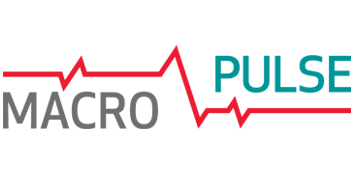
In accordance with the GUS data, the volume of industrial production sold in enterprises employing more than 9 people increased by 4.9% YoY in July compared to 0.0% in June (downward revision from 0.3%), running well below our forecast (7.3%), which aligned with the market consensus. Industrial production growth was largely driven up by the statistical effect of a favourable difference in the number of working days between June and July (in July 2024, there were two days more than in the previous year, while in June 2024, there were two working days fewer than in June 2023). Seasonally-adjusted industrial production contracted by 0.2% MoM in July.
Calendar effects boost industry performance
Given the impact of favourable calendar effects, annual industrial production growth was broad-based, and was seen in the three main segments of the industry, i.e. export-oriented branches (-1.6% YoY in July vs. -6.1% in June), construction-related sectors (5.5% vs. 1.2%) and other categories (8.2% vs. 3.9%). Notably, export-oriented branches are seeing a continued drop in production, which stands in stark contrast to the growth trends manifested in other industrial categories. The situation in the automotive sector is particularly negative. Despite positive calendar effects, the growth rate in the “motor vehicles, trailers and semi-trailers” shrank from -4.7% YoY in June to -9.1% YoY in July. In our opinion, short-term production prospects for export-oriented branches remain unfavourable due to a lower activity in the manufacturing sector in the Eurozone, including in Germany, which led to reduced demand for intermediate goods manufactured in Poland. Set to be released tomorrow, flash Eurozone PMIs for August will offer more details on the outlook of export-oriented sectors.
Surprisingly high employment growth
In accordance with the GUS data published today, the employment growth rate for the enterprise sector remained stable between June and July at -0.4%, aligning with the market consensus and outperforming our forecast of -0.5%. Compared to June, in July employment expanded by 4.3k people. On a month-on-month basis, this marks the first increase in the number of jobs since January 2024. The main drivers of this trend were 3 categories: “trade; repair of motor vehicles” (+3.9k people), “accommodation and catering” (+2.1) and “construction” (+2.0k). Notably, the sheer scale of employment growth in these sectors was surprisingly high compared to historical trends. Strong demand for labour in these categories was, however, consistent with the results of the NBP’s Quick Monitoring economic survey where services and construction were the only sectors that did not see a drop in the number job vacancies reported by businesses. In July, employment figures were primarily driven down (by 3.0k people) by the decline in the “industrial manufacturing” category, just as it had been the case in the previous months, a trend associated with continuing restructuring processes in the sector. Another category that saw contraction in the number of employees (by 2.8k) was “transportation and storage”. We believe that this drop may be associated with the group layoffs at PKP CARGO S.A. which could affect up to 4 thousand employees. Today’s data support our previous assessment that a scenario of a sharp drop in the enterprise sector in 2024 is very unlikely.
Persistent strong wage pressures
Nominal wage growth in the sector of enterprises employing more than 9 employees fell from 10.6% YoY in July to 11.0% YoY in June, running below our forecast, which was consistent with the market consensus (11.8%). In real terms, due to a marked rise in inflation (see MACROpulse of 14/08/2024), the pace of wage growth in businesses fell to 6.1% YoY in July, down from 8.2% in June. As a result, we recorded a substantial decline in the real growth rate of the wage fund in enterprises (the product of employment and the average wage adjusted by price changes) to 5.7% YoY in July, compared to 7.8% in June and 8.1% in Q2. It should be noted, however, that the drop in the nominal growth rate of total wages (and the wage fund) in July was chiefly attributable to the “mining and quarrying” category, with most of the remaining categories reported by GUS recording an acceleration in wage growth. Today’s data thus signal sustained strong wage pressures, which poses a slight upside rise to our scenario, which assumes a slowdown in consumption growth in annual terms in H2 2024. A more accurate assessment of private consumption trends will be possible following the release of retail sales data for July, set to be published tomorrow.
Gradual recovery scenario underpinned by data
Today’s data on industrial production and average wages and employment in the enterprise sector underpin our scenario, in which consumption will serve as the main driver of economic growth in the coming quarters. Lower-than-expected production figures in July reduce the upside risk for our 2024 economic growth forecast (2.3% YoY) related to the publication of a higher-than-expected flash GDP estimate for Q2 (see (MACROpulse of 14/08/2024).
At the same time, we believe that the overall tone of today’s data from Polish economy is slightly negative for the PLN and the yield on Polish bonds.

